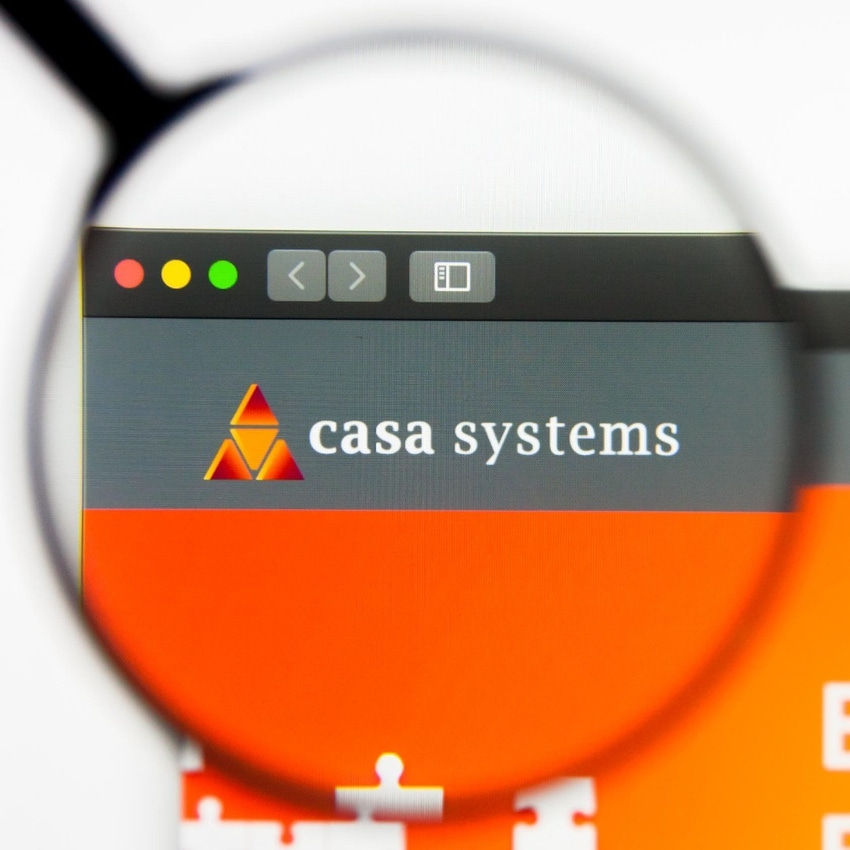Casa CEO expects a brighter 2023 as cable upgrade activity heats up
Casa's 2022 was wrought with supply chain issues that hit the bottom line, but CEO Jerry Guo says business will pick up across telco, mobile and cable, as the latter gets more aggressive with DAA upgrades.

Thanks to supply chain constraints that slowed and backlogged sales, 2022 might be a year to forget for many telecom suppliers. That group includes Casa Systems, which just came out of a third quarter that was marred by supply chain issues for its two hardware-heavy segments: cable and access devices.
"This quarter has been a complicated quarter from a financial point of view," Casa Systems CEO Jerry Guo tells Light Reading.
That's definitely one way to put it as Casa saw Q3 2022 sales dip 33%, to $66.9 million, coming in below the $83.3 million expected by analysts.
Figure 1:  (Source: Pavel Kapish/Alamy Stock Photo)
(Source: Pavel Kapish/Alamy Stock Photo)
Cable spending perking up
A bright spot in the haze was cable sales – cable-related revenues were down on a year-over-year basis, but jumped 20% versus the prior quarter. Guo said that's one of multiple signs indicating that Casa's cable business is starting to pick up again thanks to increased network upgrade activity and some loosening of supply chain constraints.
Casa wasn't able to ship as many products on order as it wanted during Q3, but "we do see that we'll catch up more in Q4," Guo said.
As for cable, "we see the whole industry is moving forward with the next-gen of network upgrade," Guo.
Charter DAA decision having a "big impact"
Word that Charter Communications is now centering its plans on a distributed access architecture (DAA) that pairs a virtual cable modem termination system (CMTS) with remote PHY nodes "is making a big difference in leading [other operators] about what to do," Guo added. "Their decision has had a big impact."
Among tier 1 cable operators, "almost everyone is going to do something. That was not the case a year ago… This is a very different kind of feeling than a year ago," he said. "We [expect that] 2023 is going to be a very exciting year in terms of deployments."
Casa Systems, like some of its peers, has products covering both options for DAA – remote PHY and remote MACPHY. The remote PHY option distributed the physical layer functions of the CMTS (such as QAM modulators and demodulators) in fiber nodes. Remote MACPHY puts more CMTS functions – the PHY plus the Media Access Control (MAC) processing – at the edge.
"We do see that a number of operators are going to stay with remote MACPHY, but a larger number are going with remote PHY in 2023," Guo said.
Casa, he said, has commercial deployments and live trails for its vCMTS underway with multiple operators in North America, South America and a few in Europe. A vCMTS/DAA deal with Canada's Rogers Communications is one that's been announced.
And while cable is expected to be a "big driver of growth next year," Guo also believes Casa will also see more activity in other areas, including the 5G packet core and from its small cell RAN (radio access network) product line.
Financial snapshot
Casa generated total Q3 revenues of $66.89 million, down from $99.21 million in the year-ago quarter. That was paired with a net loss of $31.16 million, widened from a year-ago loss of $876,000.
Among product segments, wireless revenues were $19.89 million, down from $43.07 million, and fixed telco revenues reached $14.97 million versus $20.18 million. Q3 cable product revenues hit $20.57 million, down from $24.49 million a year earlier, but were up 20% on a sequential basis. Service revenues for all product segments hit $9.67 million, up from $9.50 million.
Casa reported some progress from its $140 million 5G core software licensing deal with Verizon for consumer networks. Verizon, which now holds a 9.9% stake in Casa, paid $20 million in licensing fees in the quarter.
Casa Systems also cited a "customer dispute" in its Q3 financials that resulted in a non-cash charge of $12.9 million. Casa CFO Ed Durkin said this stemmed from the access device side from the company's NetComm subsidiary. The issue, he said, centered on a subcontractor substituting a resistor component that didn't technically comply with the specs, resulting an "electrical overstretch issue." The issue was limited in scope to one product and one lot of that product, Durkin said.
Related posts:
— Jeff Baumgartner, Senior Editor, Light Reading
About the Author(s)
You May Also Like












